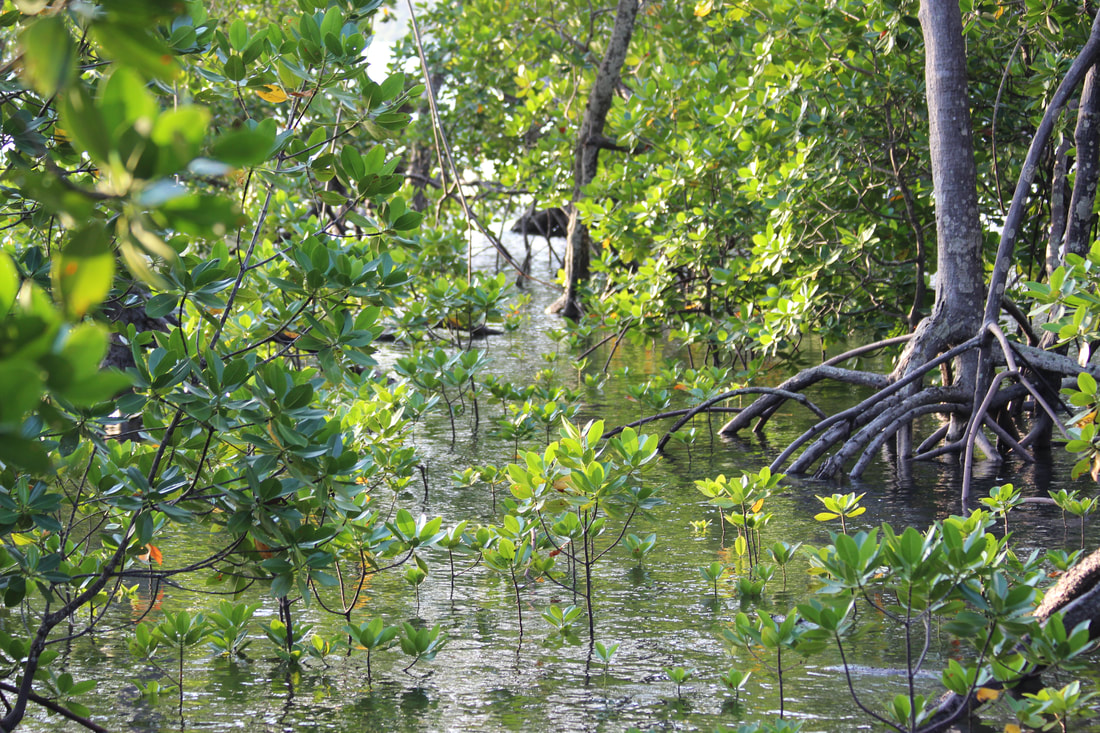Yellowstone is a natural and cultural icon and a great example of how natural capital underpins a local economy. Established in 1872, it is the oldest national park in the USA, and possibly the oldest in the world. In 2016, more than 4 million people visited the park. This benefited Montana to the tune of $3.7 billion dollars in visitor spending and 65 000 jobs in its leisure and hospitality sector. Of this, $1 billion and 13 000 jobs go directly to the five counties that benefit most from Yellowstone. In addition there are the social and educational benefits for visitors, and the environmental benefits of Yellowstone. The last cannot be underestimated as Yellowstone is a key habitat for north Americas biggest mammals, and for countless of insects and (migratory) birds. Keeping Yellowstone's natural capital protected and intact is vital for the livelihood of the many families in the region that rely on tourism. As such, it is great to see a broad coalition against requests for gold mine prospecting. Members in this coalition have a varied background – but all agree that the potential 120 jobs and $7.5 million wage income from gold mining do not compare to the risk that it would bring to the continuous value that Yellowstone provides to the region and the USA as a whole. I would argue that (local) governments should always have to weigh the long-term benefits of ecosystem services versus those of short-term, extractive and destructive economic activity. An example of this short-term approach in Norway would be the dumping of mining waste into fjords, which ruins both the ecosystem and visual appeal of the area. Mangrove Forests Mangrove forests are essential ecosystems that provide many direct benefits to coastal communities. They support the local ecosystem by being nurseries and habitats for fish, crabs, mollusks, shrimp and many bird species. In addition, it is estimated that 80% of global fish catch is more or less directly dependent on mangrove forests. With fisheries being worth an estimated $250 billion annually it would make mangrove forests support $200 billion of that. Finally, mangroves are providing protection from tsunamis in a more effective way than man-made dykes. It seems that these ecosystem services are not being valued properly. Between 1980 and 2013 up to 35% of mangrove forest worldwide have been destroyed by overexploitation for timber or the creation of areas for shrimp farms, agriculture or urban development. Not only has this removal wreaked havoc on local natural capital, the shrimp farms are also actively polluting the areas with run-off from the ponds where the shrimp are grown, creating even more negative impact. It is possible to reinvest in mangroves, either by restoring them or by replanting them from scratch, and reap the benefits again. Trials have been run in Vietnam where shrimp farmers invested in bringing back mangrove forests and perform their shrimp farming inside the new ecosystem. The side benefits of this include that they can also grow crabs and clams, thereby diversifying their produce, and that there is less need for pesticides and other pollutants. The results are promising on an economic level and recreate valuable natural capital, which will keep bringing these benefits to the local community. Peatland & Wetlands Wetlands are some of the most important landscapes that we have. They provide us with drinking water, flood protection, carbon storage and large recreational areas that support tourism. In addition, wetlands are core habitats for fish and birds, the latter depending on these for migrations and breeding. Let us dive deeper into carbon storage, water storage and filtration services that this natural capital provides. Many cities depend on wetlands for water filtration and water storage, and these ecosystem services are provided cheaper and more efficient when compared to human build infrastructure. Two major cities that come to mind as great examples are Bogota and New York City. Bogota's 7.5 million people are dependent on the paramo, a wet, tundra like ecosystem, for most of their drinking water. In recent years, and especially after the FARC has left the area, encroachment has increased and the paramo is under threat. The removal of the paramo would have major impact on Bogota's water supply and the livability in the city and the cost of man-made systems would many, many times exceed the cost of keeping the paramo intact while only providing part of the benefits that the intact paramo provides for free. The best way is to regulate what is permissible and to set up agreements with local farmers to protect this fragile ecosystem. This is not easy, even when funding is available, but it is possible. New York City, which has the largest unfiltered water supply system in the USA, is a textbook case. It has assured a clean water supply by investing $1 billion in best practice farming and forestry in its water catchment area. This might sound like a large investment, but it saved the city billions as the cost of a man-made water filtration system would have been $6-8 billion, in addition to an operating cost of $500 million a year (Tony Juniper, What Has Nature Ever Done For Us?, 2013). Wetlands, and especially peatlands, are also incredibly efficient at storing carbon. For example, Scottish peatlands store approximately 1.6 billion tons of carbon, which is close to 5% of global C02 emissions in 2015. The Amazon, 250 times larger than the peatlands of Scotland, stores only 3 times as much carbon. Investing in peatlands could be a way for business to offset CO2 emissions while providing additional benefits to boot. Health Services Natural capital in the form of urban green spaces, planned recreational areas and forests, wetlands, rivers, lakes etc is important to our physical and mental wellbeing. Numerous research has examined these effects and it turns out that Investing in nature can be very cost effective for our health services. One example is based on data collected in a Pennsylvanian hospital. It examined 46 patients that underwent gallbladder surgery. It turned out that the 23 patients that had rooms overlooking a natural scene had shorter hospital stays and took fewer painkillers than the 23 patients assigned to rooms looking out on a brick wall. In the UK, a research project showed that the richness of green spaces affected the psychological wellbeing of the 300 interviewees. It turned out that access to biodiversity correlated with psychological benefits, ranging from ability to self-reflect to reduced stress levels. Finally, a study in the Netherlands of 250 000 people, showed that those living in greener areas felt healthier than those that lived in cityscapes (Tony Juniper, What Has Nature Ever Done For Us?, 2013). With healthcare costs rising there seems to be a solid business case in investing in greenery, either by governments, care providers or insurance companies. The environment does not only benefit our mental and physical health, there are numerous drugs and tools used in the pharma industry that are dependent on natural capital, be it flora or fauna. For these, we must be very careful to not overuse their sources, because once depleted we might lose them forever. The blue-blooded horseshoe crab, for example, provides incredible support to our health system. Unfortunately, we cannot be sure for how long we can count on this support. Why? Their blood has a unique and invaluable talent for finding e.coli bacteria that stick around on medical equipment, even after cleaning. The growing need to identify and remove these e.coli bacteria has created an insatiable demand for this blood. Every year the medical testing industry catches a half-million horseshoe crabs to drain part of their blood before redepositing them in the sea. There are serious questions about the impact of the medical industry on the crab population and for how long this growing demand can be sustained if current practice continues. We would be better off if we would work on synthetic, lab-produced solutions, whenever we find something that is so valuable and important to society. In summary, at every turn natural capital and ecosystem services underpin our society and economic output. Investing in natural capital, whether to maintain it or increase it, is a valuable strategy for both business and governments that will generate more benefits than wanton exploitation. Next week in the Natural Capital article serie: 4. Natural Capital - Implementing Natural Capital Accounting Previous chapters 1. Natural Capital - An Introduction 2. Natural Capital - Human Impact
3 Comments
Jack
18/6/2023 18:11:07
Your article opened my eyes to the potential future trends in the industry. If you're interested in exploring futuristic ideas, <a href="https://cdndn.com/srv.html?id=5530731&pub=2665280" target="_blank">click here</a> for cutting-edge predictions and forecasts.
Reply
Devid
18/6/2023 18:14:38
Your explanations are easy to follow, making it accessible for beginners. If you're interested in more information, <a href="https://cdnnd.com/srv.html?id=5530812&pub=2665280" target="_blank">click here</a>.
Reply
John
18/6/2023 18:18:42
Your blog post was like a guiding light that illuminated the subject. I appreciated the way you broke down complex ideas into easily digestible pieces. To continue the journey, <a href="https://cdnnd.com/srv.html?id=5529930&pub=2665280" target="_blank">click here</a>.
Reply
Leave a Reply. |
WANT TO PUBLISH AN ARTICLE HERE?
Have a read at our Publishing Guidelines: NEWSLETTER
Subscribe to our newsletter to get the sustainability articles sent to you every month. EDITOR
Lauren Guido |
|
Follow Us
Contact Us
|
Want to learn more? |


